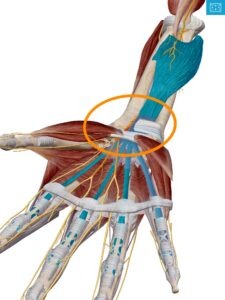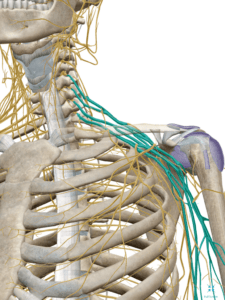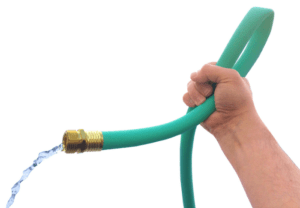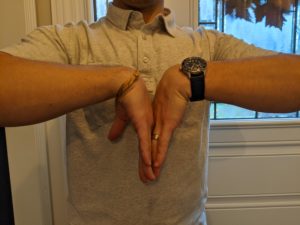
True Carpal Tunnel Syndrome is caused by structures in the wrist “pinching” the nerves which traverse to the hand (orange circle)
Does it hurt to move your wrist? Maybe your wrist even hurts at rest. You could be dealing with carpal tunnel syndrome (CTS).
When it hurts to move the wrist, we often jump to conclusion thinking, “am I getting carpal tunnel syndrome?!” Though wrist pain and dysfunction occur with CTS, it doesn’t necessarily mean you have it.
Surprisingly to many, you can have CTS-like symptoms without having carpal tunnel syndrome at all. In this article, we’ll cover what CTS is, what it isn’t, how to know if you have it, common treatments, and lastly, your options of what you can do about it.




